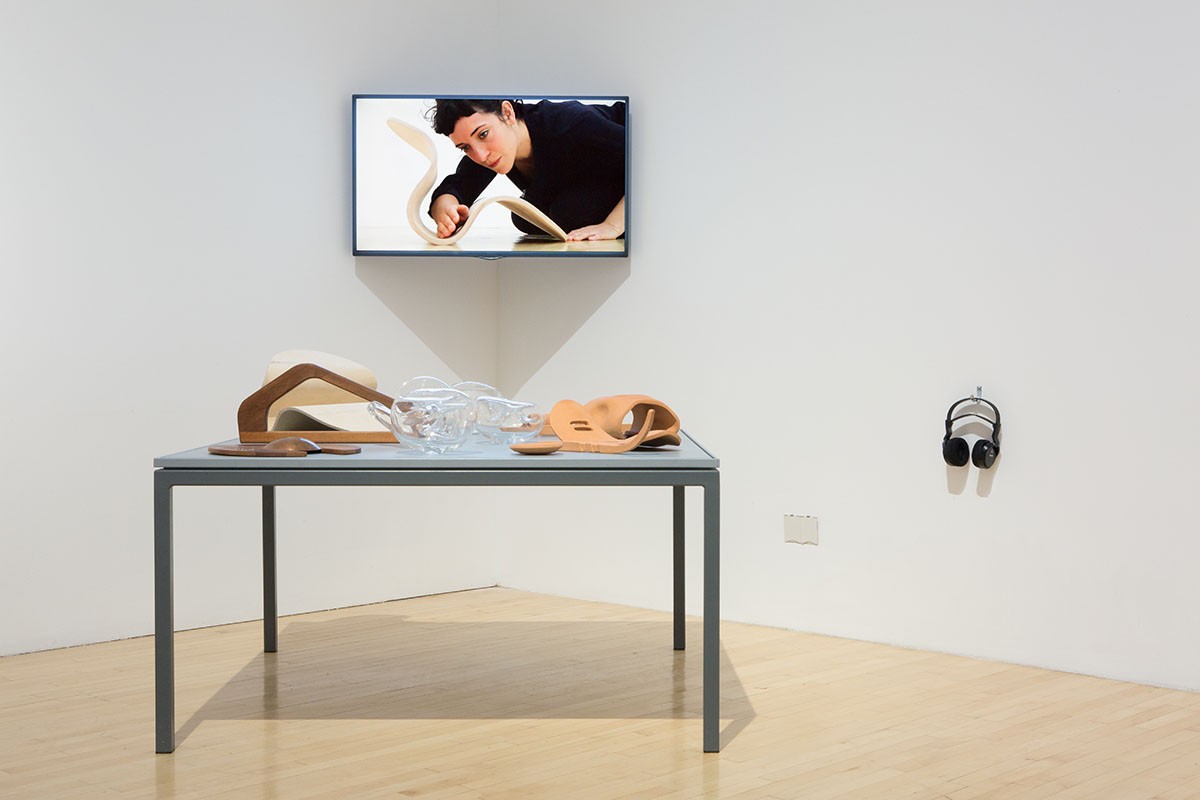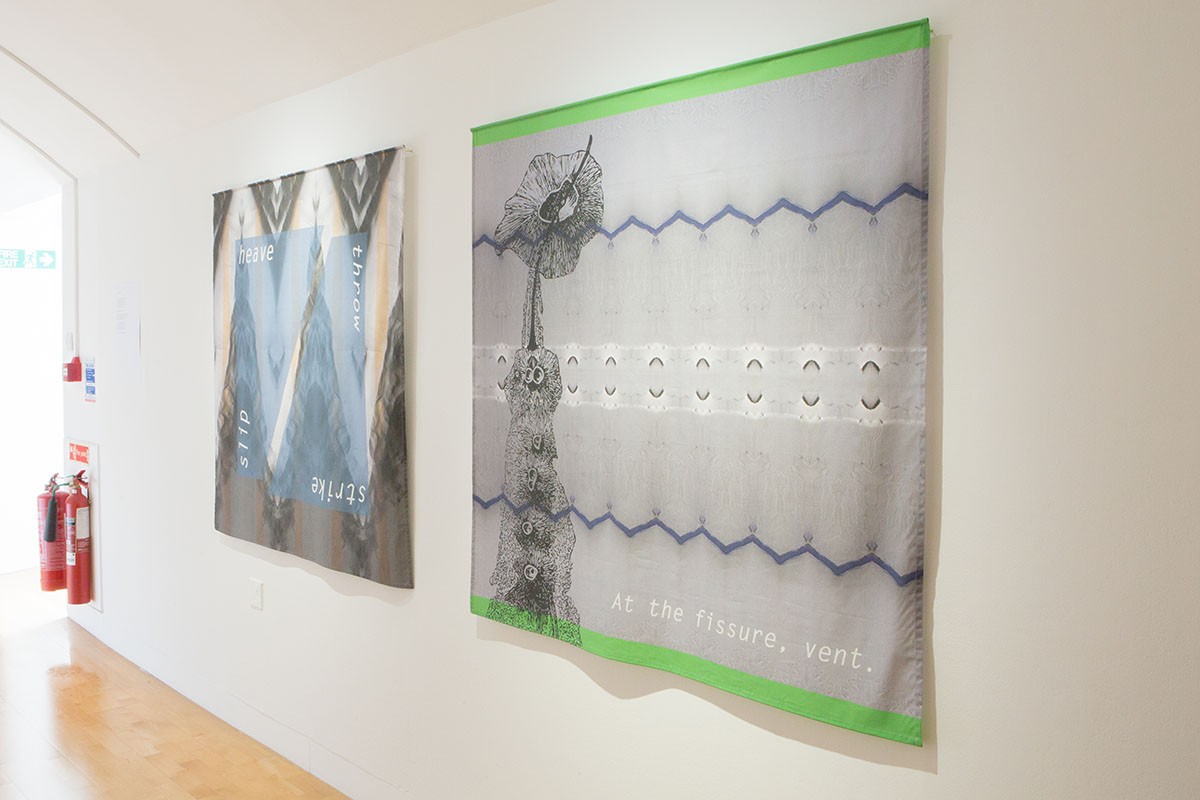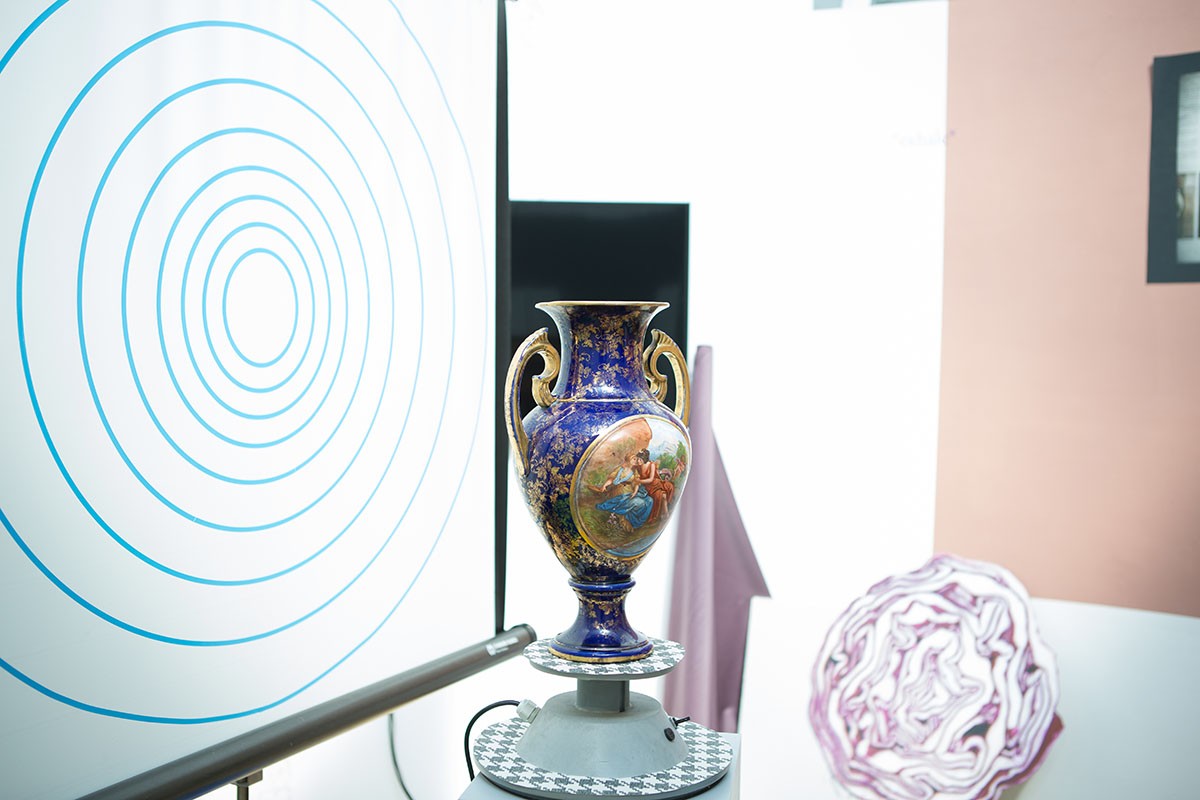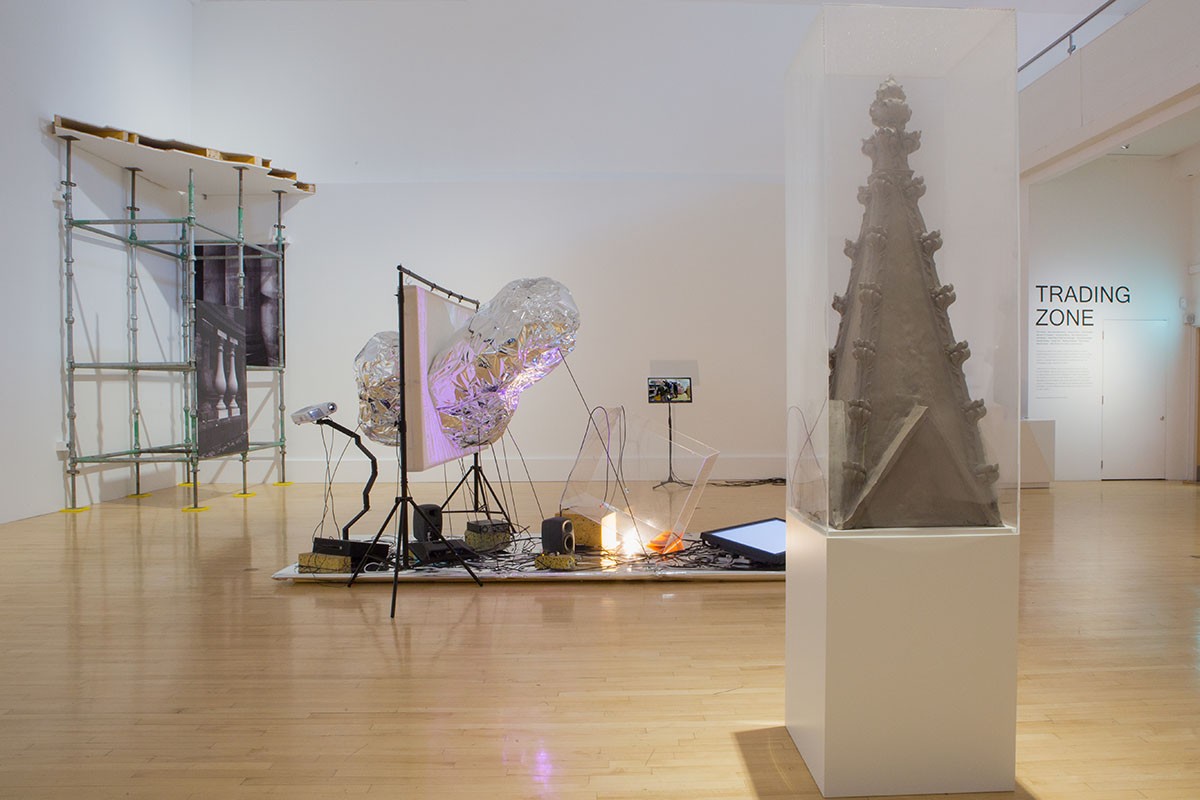Trading Zone 2018
-
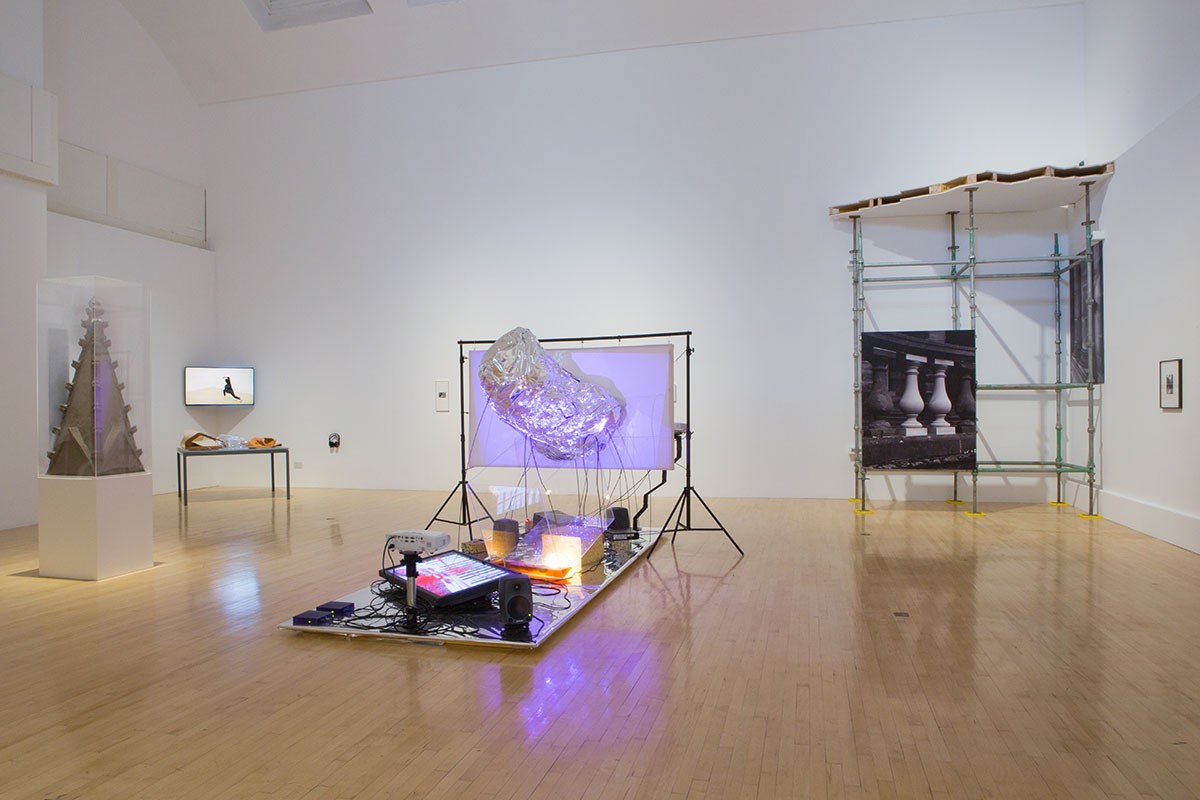
Tim Craven, Kat Cutler-MacKenzie, Frances Davis, Dara Etefaghi, Samuel J H Froggatt, Hanqing and Mona, Jack Handscombe and Joe Revans, Asad Khan and Eleni-Ira Panourgia, Louisa Love, Doug McCausland, Quentin Scobie, Amelia Tan, Neslihan Tepehan, Ella Yolande, Matt Zurowski, Allie Turner, Finn Ickler and Luis de Sousa
Launching a new type of student exhibition, Trading Zone creates a meeting point for different disciplines from across the University. Energised by the speculative energy of contemporary art, the 2018 edition includes virtual data-landscapes retrieved from the aftermath of Hurricane Katrina, mushroom built Gothic spires and explorations of the earth-born cracks and tangles of our language systems. Featuring students of Architecture, Art, Contemporary Art Practice, Fine Art, History of Art, Creative Writing, Digital Composition and Performance, Music, Creative Music Practice, Design, Design Informatics and Intermedia.
Trading Zone is a meeting point of hybrids, creoles, phantoms and liminal objects, taking us into this speculative future.James Clegg, Assistant Curator, Talbot Rice Gallery
Exhibition Guide
Published on the occasion of 'Trading Zone' at Talbot Rice Gallery, University of Edinburgh.
Texts by Tessa Giblin, James Clegg and Stuart Fallon are available to view below, or download free of charge.
A large print guide is also available to download.

Trading Zone
Encompassing a diverse series of approaches to our contemporary world, the works in this year’s Trading Zone seems to direct us towards global changes that connect around three broad concepts: data, behaviour and ecology. These terms suggest some of the fundamental ways we come to know our place in the world: the things we can establish as facts; how we consciously or unconsciously act in our environment; and the nature of that world as a ‘home, dwelling place, habitation’ (as suggested by the roots of the term ecology).
It is impossible to avoid the fact that these concepts are currently under intense pressure. Take ecology, for example. As Bruno Latour observes, ‘we have shifted from a mere ecological crisis into what should instead be called a profound mutation in our relationship to the world.’1 This mutation requires huge shifts in how we arrive at understanding. Firstly it requires us – as Latour argues – to recognise that data need not be a purely scientific tool. For unless the facts we can reasonably ascertain about the changing nature of our planet also become a political force, then the power of eco-sceptics – who profit from the status quo – remains unchallenged. Likewise, we might add, we urgently need to change our physical and mental behaviour, to recognise that our actions occur as part of giant assemblages that could have profound environmental consequences.
As a meeting point for diverse and experimental approaches to art and ideas, Trading Zone is ideally placed to feel out the new territories caused by this ‘profound mutation’. The works that have been included in the exhibition show us that changes in data, behaviour and ecology are shifting the basis through which we might gain or even relate to knowledge. Like Timothy Morton’s notion of Ecognosis, from his book Dark Ecology, we should expect this new sense of knowing to feel different, to be ‘something like knowing, but more like letting be known. It is something like coexisting. It is like becoming accustomed to something strange, yet it is also becoming accustomed to a strangeness that doesn’t become less strange through acclimation.’
Morton’s aim here – one shared with a number of theorists – is an attempt to shift patterns of thought in a way that is more integrated with nature. Not ‘nature’ as it is romanticised or neutralised in language, but a deeper shift that acknowledges its diversity, relentless invention and fundamental weirdness.
This shift will require us to think across disciplines in a creative way, whether we call that way ‘art’ or not, and it will necessarily be a collaborative ‘us’. As Donna Haraway writes in her attempt to creatively rethink ecological challenges in the face of a political climate of extremism and defeat, ‘Alone, in our separate kinds of expertise and experience, we know both too much and too little, and so we succumb to despair or to hope, and neither is a sensible attitude. Neither despair nor hope is tuned to the senses, to mindful matter, to material semiotics, to mortal earthlings in thick co-presence.’
The works in Trading Zone suggest this thick co-presence, these material semiotics. They offer up a tangle of places, materials and identities. In it, we see how data can redefine our relationship to catastrophe; we can see how our behaviour is connected to material objects and routines; we can witness a past and a future defined by other organisms – the affective and effective thought processes of other life forms that are at once complex and utterly strange. Trading Zone is a meeting point of hybrids, creoles, phantoms and liminal objects, taking us into this speculative future.
James Clegg, Assistant Curator, Talbot Rice Gallery
Trading Zone stems from a desire to explore the diversity of student practice taking place across the University of Edinburgh. Led by a process of discovery, it evolved through an engagement with the work of over 300 students, including those from disciplines as seemingly far apart as Archaeology, Business, Design and Music. Celebrating the knowledge that is produced when diverse things are brought together, Trading Zone forges conversations across disciplines to create a testing ground for the exploration of ideas. Acknowledging that disciplines are already complex things made up of distinct processes, languages and technologies, it sets these ideas against the speculative horizon of contemporary art. The result is a far reaching visual conversation that reflects our ever-changing understanding of the world around us and our place within it.
Curated by Tessa Giblin, James Clegg and Stuart Fallon of Talbot Rice Gallery.
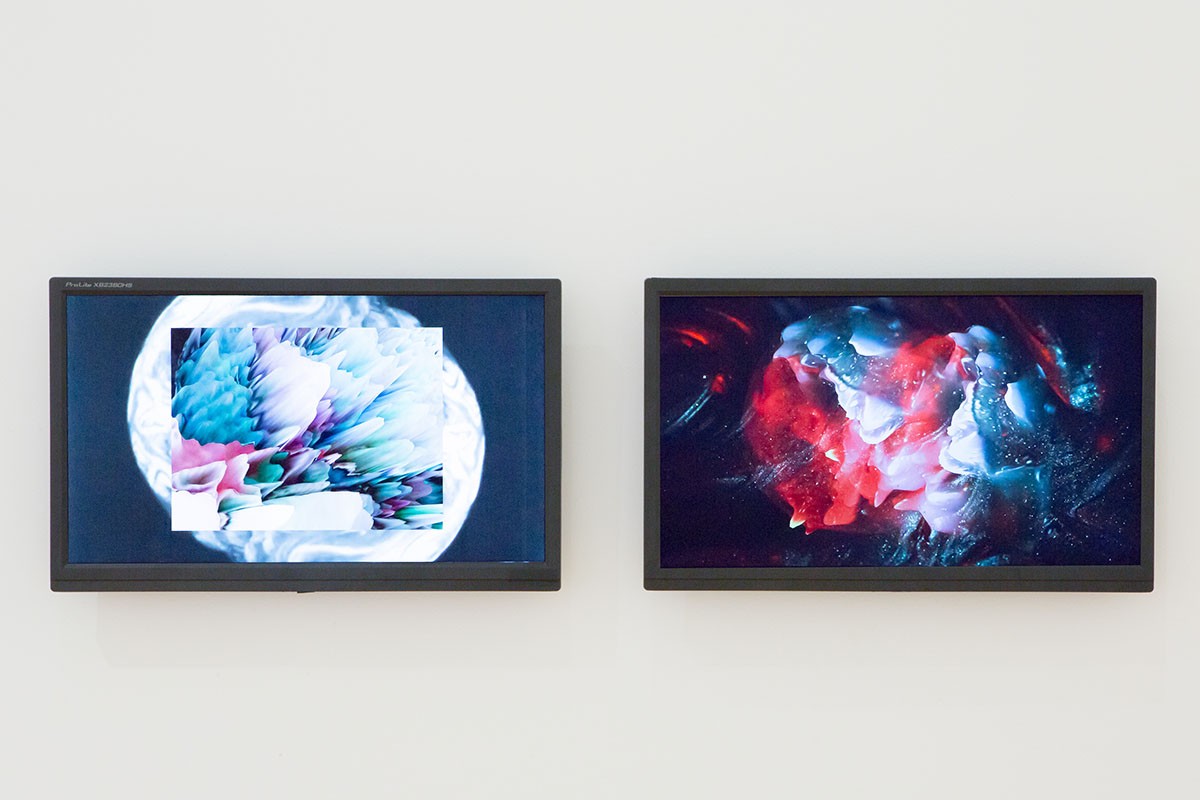
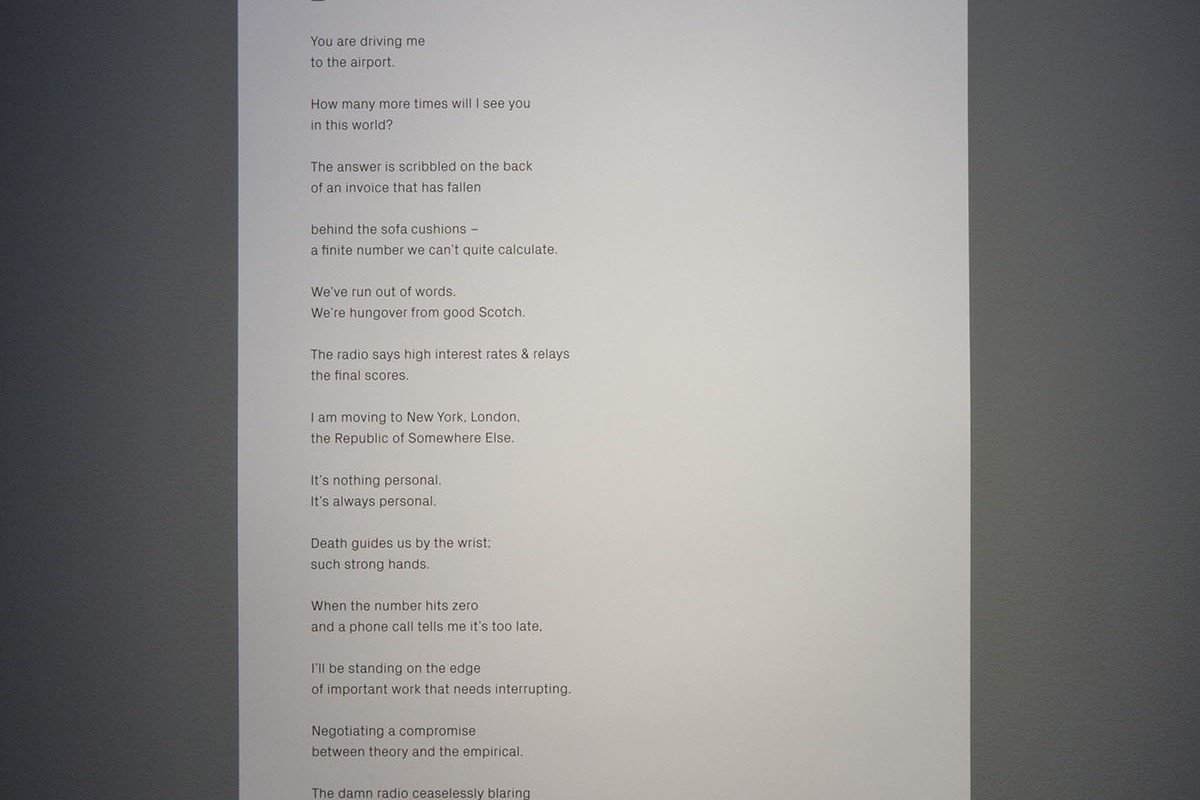
Tim Craven
Creative Writing – PhD, year 2
Working with poetry, Tim Craven explores the ways in which we create shared understanding between ourselves, believing that it is the essential human trait to strive for common, collaborative insight that propels the evolution of language. For Trading Zone, Tim has produced a collection of poetry that explores the confluence of disparate languages; specifically, how seemingly incompatible lexicons can incorporate each other’s strengths and beauty in order to create a new mechanism for communication.
Distributed throughout the Gallery, Tim’s poems disassemble and reconstruct Peter Galison’s original writing on the ‘Trading Zone’, responding to the work of the other artists in the exhibition and incorporating his own medical humanities research, which investigates the linguistic intersection between the clinical terminology and an individual’s metaphors for the mind. The full series of poems will be printed during the run of Trading Zone and made available at a closing event at which Tim will perform his work.
Ella Yolande
Intermedia – year 3
'Cosmos Creature', 2018, 'Cosmic Slime', 2018
From the cosmic substances of creation myths to the indelible marks we’ve created on the planet, Ella Yolande is interested in the traces that mark human origins and existence, and that underlie the concept of the Anthropocene. Creation myths from Babylon or Native American cultures speak of a swirling watery brine or dark muddy slime underlying the origins of life. Ella’s work explores their symbolism, layering and abstracting imagery and switching between media and technologies in order to blend digital and analogue realms.
Ella’s videos in Trading Zone use visceral substances to describe the ecological and technological tensions that reside in substances such as oil. Originally formed from the decomposition of organic lifeforms, oil also underlies the transport industry and the production of plastic. The seductive images – embodying the beauty and ugliness of creation – speak to micro and macro visions of the world.
Hanqing and Mona
Art – PhD, year 1
Interior deduction, 2018, [installation], TRG-1973, 2018 [framed screenprint]
Hanqing & Mona’s work blurs the relationship between architecture and archaeology, treating sites as remnants that hold information about previous encounters and historical transformations. They look to deconstruct the concept of space as a given uniform presence, in favour of a more tangled concept of place. Place accounts for embodied experience, punctuated as it is by architecture’s material and temporal interventions.
For this installation, Hanqing & Mona rework existing structures (cutting a new surface from a temporary wall behind the main desk and creating a platform with it), adding objects to it that represent the building’s exterior, and a historic photo that shows the initial conversion of the gallery space. Exploring the idea of forms being hidden and then found and uncovered, the work allows us to peer deeper into the fabric of the building.

Jack Handscombe and Joe Revans
Fine Art - MAFA, year 5, Product Design, year 4
Fruiting Body, 2018
Jack Handscombe and Joe Revans have collaborated for the first time on their project for Trading Zone, presenting a pinnacle in the style of Gothic architecture, made from mycelium and coffee grounds. Mycelium is the radical root-like part of fungi that enables it to propagate. Spreading underground, or through procured substances such as coffee grounds, its networks can be microscopic or can expand to consume hundreds of acres of land, erupting into fruiting bodies such as mushrooms. During the course of Trading Zone, the mycelium will feed from the coffee grounds and eventually sprout a covering of oyster mushrooms.
Bringing together their respective interests in the philosophy behind Gothic Revivalism and the unconventional computing potential of living cultures such as slime mould, this project speaks both to the past and to a speculative future that breaks away from the regimented uniformity of the modern world. Where architects of Gothic Revivalism saw advantage in the ‘barbaric’, non-rationalised approach of Gothic architecture, recent experiments by living cultures to create highly efficient, complex, non-binary maps in their search for energy sources anticipate a revolutionary age of alternative computing.
Neslihan Tepehan
Product Design – PhD, year 3
Non-objects: Designing for in-between, 2018
Our understanding of our immediate environment is largely construed through our interactions with the things around us. Neslihan Tepehan’s work highlights how our physical interactions provoke different responses and how, from the first time we encounter an object, we begin to build a vocabulary of movement that slowly becomes part of our daily habits. Object-based design practice takes up these relationships and explores the alternative potential within the materials, forms and bodies in their ongoing entangled relationships.
A series of objects designed to interrupt, disturb or break established habits appear in Trading Zone. Working with dancers to create a live performance at the preview of the exhibition and a video to be shown alongside the display of objects, Neslihan demonstrates the importance of considering the body in relation to a live assemblage of other materials and objects. In her terms, ‘the bodies and the objects are constantly forming temporary operational solidarities which call forth a body that has not yet emerged.’
Kat Cutler-MacKenzie
Fine Art – MAFA, year 2
left to right: Six Eyes, 2018, Swan Lake, 2018, Foxglove, 2018
Kat Cutler-Mackenzie’s work uses dresses, pleats and skirts to evoke the theoretical concept of the fold. For the philosopher Giles Deleuze, the idea of the fold (quite simply as you might think of folding paper) could help us to better understand subjectivity. He proposed that rather than assume that inside and outside are exclusive categories, we consider the inside as a temporary folding-in of the outside. He also used it as a more general, open concept: if a piece of paper represents the inexhaustible potential of nature, then our reality is comprised of a constant folding and unfolding of that potential.
The collages in Trading Zone show how Kat’s work brings gender into this equation. Avoiding simple dichotomies, they highlight the construction of gender at the point where two bodies meet, namely the biological and ideological body. In this instance, the images are taken from two hardback anthologies, The Story of the Royal Family (1981) and Dancing, The Power of Dance Around the World (1992). Whilst the Royal family represents a façade for Kat, dancing contains the contradiction of bodies in a state of motion or becoming, and a sense of traditional gendered roles. Borrowing from T.S. Eliot, her interest lies in the idea that ‘at the still point of the turning world is the dance’ – amidst strict order or apparent stasis there is always the potential for movement and change.

Amelia Tan
Intermedia – year 4
Fruit Loops, 2016
Amelia Tan’s work often begins with filmed observations of everyday behaviours or actions. This informs the development of an abstracted series of fragmented movements, developed through workshops with other people. Interested in the façade that we build when working in public situations, her work aims to make visible the unconscious movements that shape our relationship to the materials and meanings of the modern world.
For the exhibition preview, Amelia is creating a performance piece that takes its cue from the movement and gesture involved in working at such an event – observing the overt and discreet mannerisms involved in waiting and waitressing. This includes the precise actions that are formally expected (such as positioning a wine bottle label to face a guest), as well as the furtive things that happen when no one is looking. For the run of Trading Zone, Fruit Loops will also be screened, a work which applies Amelia’s process to the activity of supermarket shopping.
Matt Zurowski
Contemporary Art Practice – MFA, year 1
Symbiont, 2018
Using scanners to capture objects and spaces, Matt Zurowski constructs multi-media installations that exist somewhere between the real and the virtual. Taking signals (including temperature and carbon emissions) from fermenting cultures and feeding them back into various computer systems, these environments respond to the interaction of living and digital agents.
For Trading Zone, an object has been extracted from the digital realm and realised as a large, sculptural, meteorite-type object that intersects a two-way screen. At once destroying the flat surface and becoming a reflective, organic screen itself, it evokes science fiction and symbolises an otherworldliness. With the base of the work supporting a large habitation tank for the living culture, and reams of wires, there is also a Frankenstein quality to it, a body-horror of mutating relationships that reflect the unyielding strangeness of our shifting relationship to different realities. There is a theatrical pathos to the work, a kind of timeless sadness related to our inability to really know our place within the broader universe.


Asad Khan and Eleni-Ira Panourgia
Architecture – PhD, year 1, Art – PhD, final year.
29.9511° N, 90.0715° W, 2018
LiDAR (Light Detection and Ranging) uses pulsed laser to capture the co-ordinates of a real-world environment. Asad Khan then visualises this data in a virtual 3D environment and animates it using virtual cameras. For Asad, these moving-images create an ‘un-grounding sensation’ that can reveal catastrophic events in a new way. Hovering between the universalising logic of spatial coordinates and the granular detail of the recordings, they disrupt familiar social, cultural and psychological constructs of space, to offer something he thinks of as being ‘topologically bizarre’. The sound-track is composed by Eleni-Ira Panourgia and functions as a memory-scape. The introductory theme of the cello transforms throughout the work as if it were a block of material being carved. In this way, it echoes the sense of the images puncturing space whilst aiming to create the feeling of one visiting the ruins of a city, where past life can be sensed but may not always be visible.
The data animated for Trading Zone was captured by the U.S. Geological Survey (USGS), NASA and the U.S Army Corps of Engineers in New Orleans on 29 August 2005. This is when Hurricane Katrina, the deadly tropical cyclone, subjected the city to cataclysmic conditions. Witnessing New Orleans from the eye of the hurricane, displaced by the strangeness of LiDAR vision, we are offered a ghostly mediation of post-catastrophic remains.
Data courtesy of USGS, 2009, Terrestrial Lidar Data of New Orleans, Louisiana After Math of Hurricane Katrina, August 29, 2005: Data Series 470, U.S. Geological Survey, Western Earth Surface Processes Team, Menlo Park, CA.
Quentin Scobie, with Ralph Hipps
Music – MA, year 4
Le Servo De Spock, 2018.
Quentin Scobie’s work resists academic interpretation, his idiosyncratic videos offering up a peculiar mix of heroic posturing and self-effacement. At times he strives to emblazon moments of life, drawing upon a Nietzschean vision of artists possessing physical strength, surplus energy and animal sensuality. But his video persona seems destined to fail, never quite transcending the puerile, repetitive nature of consumer society and reflecting some of the most challenging facets of masculinity.
For Trading Zone, Quentin presents remixed version of videos made for social media with his sometimes collaborator Ralph Hipps. Stitched together and overlaid with a form of commentary in parts, these works are intentionally stubborn, playfully contradictory and consciously cross lines into bad taste and poor aesthetics in order to resist easy assimilation.
Dara Etefaghi
Creative Music Practice – PhD (part time), year 2
AntiProcess:Bonding, 2018
Dara Etefaghi’s work is developed across audio-visual art, video games and cinema. It is often built using the Unity game engine and is designed to allow for multiple modes of playback and presentation. Dara’s aim is to question the medium and the context in which contemporary audio-visual art is active, considering the cultural consumption of art in a technological age.
AntiProcess: Bonding is an audio-visual piece that is part of a larger project currently under development. Centring on a fictional virtual world, it creates a disorientating series of experiences that disrupt our sense of how represented space and time should behave. This installation presents the ‘initial state’ of the work where the forms are pure, still somewhat orderly, on the cusp of something that will become more entropic as the project evolves.

Frances Davis
Fine Art – PhD, year 1
left to right: Faultline, 2018, Fissure, 2018, O Pythian, 2018, Bodyrock, 2018
For Trading Zone, Frances Davis presents new work that draws metaphors from geology in order to consider different forms of social organisation. Rather than consider rock formations as static natural phenomena, she considers their shifting materiality and potential for transforming the way we behave and think. Underpinned by feminist new-materialist readings of the Anthropocene, an epoch defined by the indelible traces of human activity, Frances’ works look to the idea of inscription. At root this means ‘a writing in’, tying the mark-making process to its material support. The work asks, what can we learn by allowing the natural and human inscriptions of earth to inform our language?
The print works Fault line and Fissure – from her ongoing glossary project A Geologic Metaphoric – are linked by reference to Pythia, high priestess of the Temple at Delphi who performed the prophetic role of the Oracle. In mythology, Oracles are conduits for Apollo, but recent studies suggest their powers to envisage fate might have been caused by vapour emissions from a chasm below the temple.
Including imagery from the HiRISE project capturing photographic data of geological phenomena on Mars: Intra-block Faulting in Olympus Mons Aureole and Fissure Near Cerberus Fossae, NASA/JPL/University of Arizona.
Allie Turner, Finn Ickler and Luis de Sousa
Design Informatics – MA / MSc, year 1
______ Twitter ___ to ______________ Brexit?, 2018
This project started with the question of how the Twitter-sphere reflected and influenced people’s voting patterns during the Brexit referendum. Having access to all the related tweets from that period, Allie Turner, Finn Ickler & Luis de Sousa were able to analyse the Leave and Remain campaigns, seeing how people retweeted specific ideas – even where lacking factual veracity – and the power of extremist voices. Conceived as an interactive display, they wanted people to navigate the twitter-sphere and discover their own version of events.
Since, the Cambridge Analytica scandal has raised people’s awareness of the issues around data protection. Responding to this, and in keeping with ethical guidelines that prohibit certain uses of their data, the group have made an interactive map of the Brexit Referendum and then removed any information that violates Twitter’s terms and conditions. Now the artwork consists of an opaque system of graphic symbols and hashtags, a commentary on the power that social media companies have to embolden strong views whilst protecting users from their implications.
Louisa Love
Contemporary Art Practice – MFA, year 1
some stretchy ecology of concentrics, 2018
Experimenting with the interactions of found and made objects, materials, imagery, text, video and sound, Louisa Love creates ‘expanded assemblage’ environments that shift between the theatrical and ambient, the poetic and the prosaic. Suggesting a dispersed consciousness, videos, spoken-word, objects and prints draw our attention to the precarities of human comprehension and its relationship to materiality. The spoken- word elements introduce the human voice as another material artefact, its various linguistic and descriptive textures proposing embodiment and attachment, yet retaining a disruptive, opaque quality that unifies the installation.
The work for Trading Zone has been made specifically in response to the Round Room, utilising many of the gallery materials to hand in order to form an intuitive and open-ended environment. This bespoke and responsive approach pays respect to the singular nature of materials and sites.
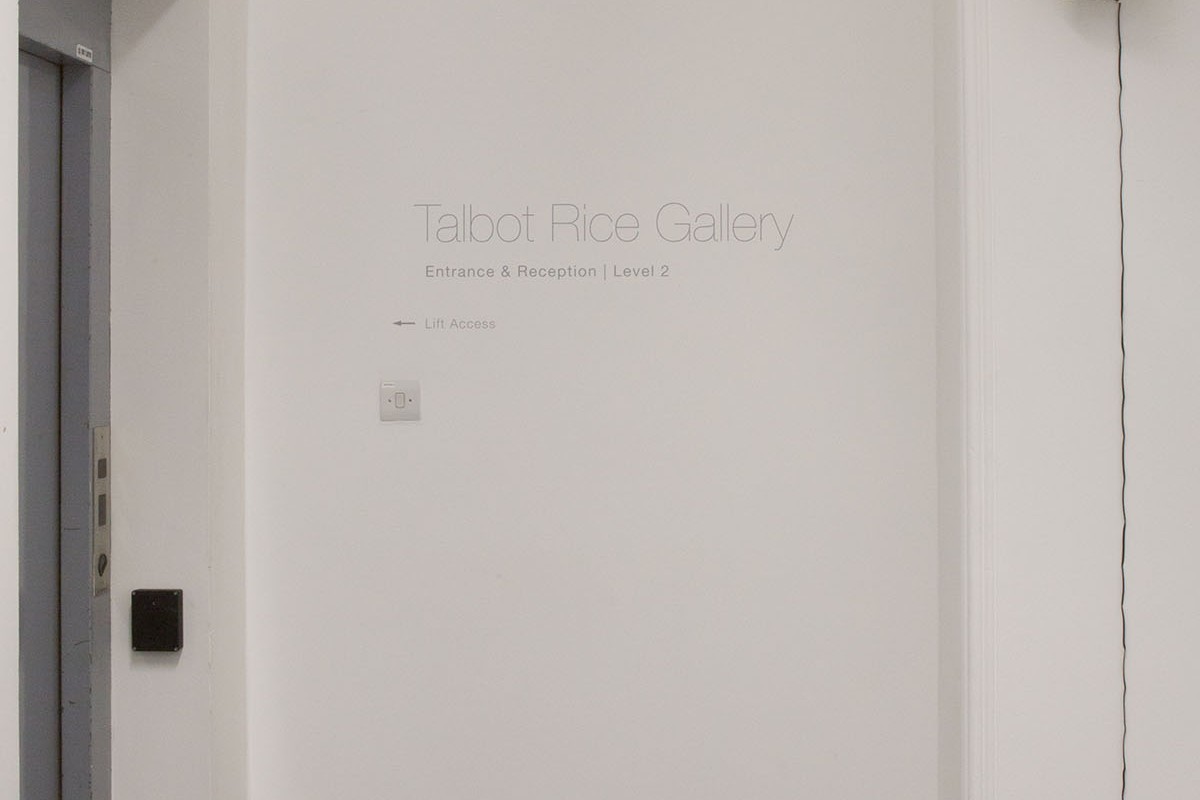
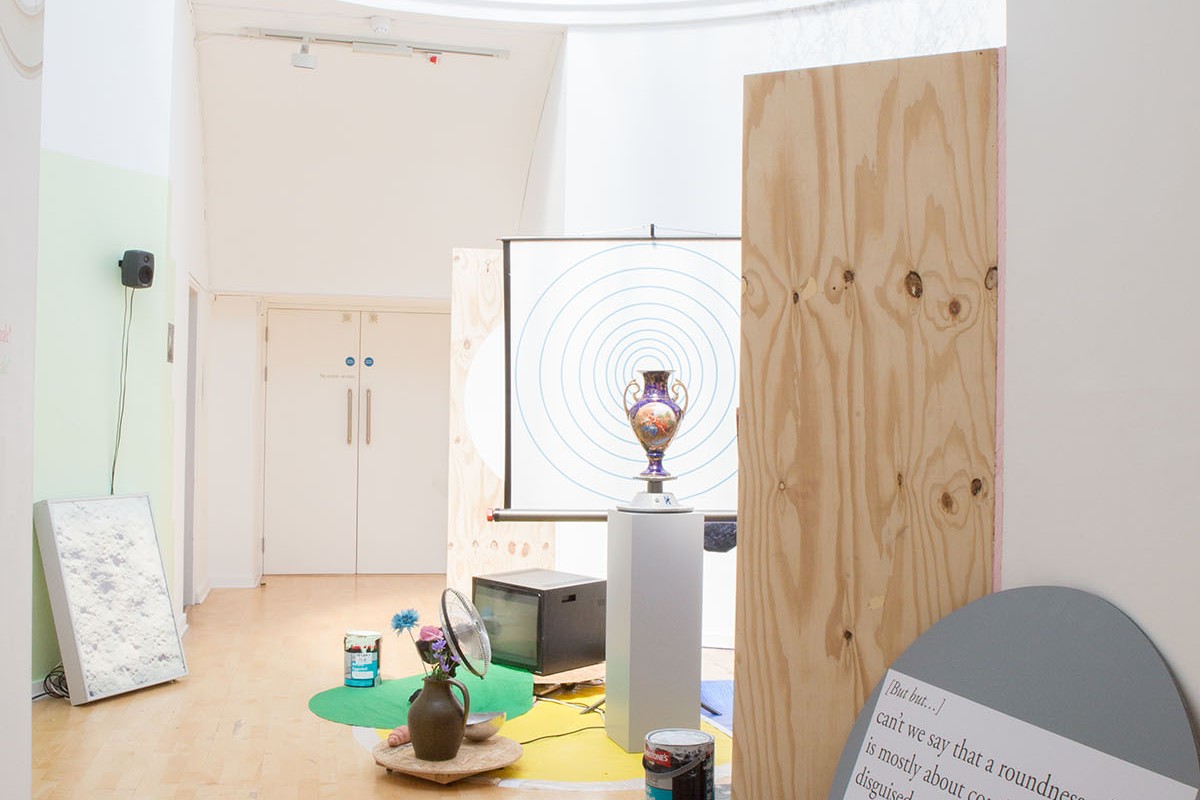
Doug McCausland
Digital Composition and Performance – MSc, year 1
(Re) Glossolalia, 2018
The original ‘Glossolalia’ (2017) was triggered by an accidental encounter with conservative radio broadcasts in Doug McCausland’s native USA. The content included, in his words, ‘misogynistic speech, denigration of basic human rights, anti-immigrant standards, racial hate, arguments in favour of nuclear strikes on the middle east, the comfort of mutually assured destruction and a holy man proclaiming the president-elect as the true God-given beacon of hope to lead mankind into the rapturous end-times.’ Already working on compositions featuring ‘found sounds’, Doug began to consider how he could use this material to make a new work.
Trading Zone features an adapted version of ‘Glossolalia’. Playing with the different acoustics and spatial dynamics of the Gallery, a series of sound pockets distort or reveal the original source material. Performing alongside the installation, using interactive systems and adapted circuit-bent radios, Doug will re-introduce live elements to create an evolving sonic dialogue.
Samuel J H Froggatt
Fine Art – MA, year 2
The Jim Monk Fan Symposium, 2018
Samuel Froggatt’s work is about the formation and presentation of identity through fandom, particularly during childhood and adolescence. He suggests that during this time we form naïve relationships with characters (both in the realms of fiction and reality) and the archetypes that they represent. His personal identification is with the ‘weakling’ archetype – apparent in history, literature, film and art. This relationship both informs his identity and serves as the focus of much of his work.
During the exhibition Samuel will run The Jim Monk Fan Symposium, which serves to distort and parody the artist’s relationship to the weakling. Camping out in the Old College Quad and appropriating a room in the Gallery, he will amalgamate pre-existing characters into the singular Jim Monk, positioning Samuel – the artist – as his most devoted fan. Sometimes hidden away in his room, sometimes performing, Samuel’s interventions will highlight the peculiarities of emulation and adoration, magnified through the lens of teenage fandom.




